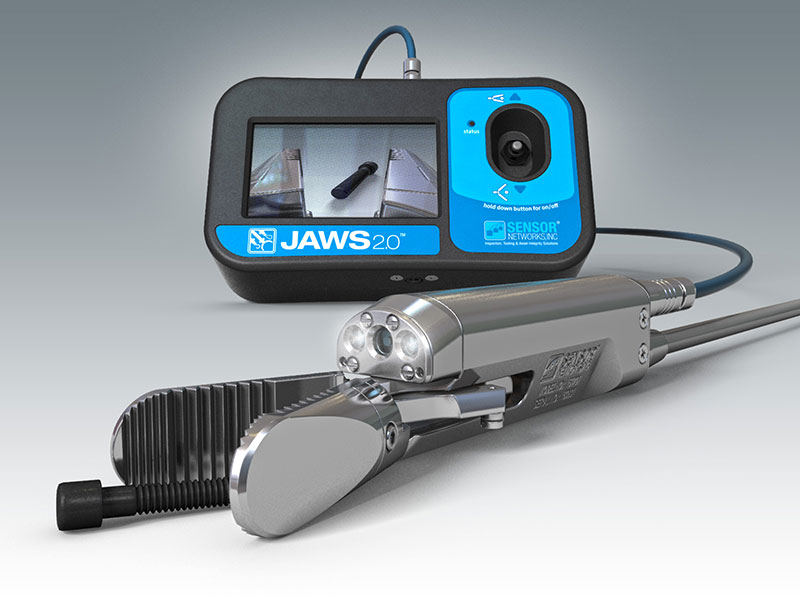
The JAWS 2.0 tool uses a CMOS imager to provide a Full HD live image of the tool operation. In some applications of the tool in a nuclear power plant or radioactive material storage, it can be exposed to gamma radiation, which deteriorates the physical structure of integrated circuits. Quantifying the life of the retrieval tool helps the customer plan for efficient maintenance.
Testing was provided by Pennsylvania State University’s Radiation Science & Engineering Center, Gamma Irradiation Facility. A low dose-rate test was performed to evaluate picture quality and a high-dose rate test was performed to determine the life of the imaging system under irradiation. Both tests utilized a Cobalt-60 source.
In the low dose-rate, the tool was exposed to a gradually increasing rate of gamma rays up to 4600rad/hour (46 Gy/hour). The image quality was stable, but the gamma rays causes a light snow pattern in an estimated <5% of the pixels. The tool was determined to be effectively usable at this dose-rate.
In the high dose-rate test, the tool was subjected to a 245 kilorad/hour (2450 Gy/hour) field until the device failed. Four tools were tested yielding an average life of 30,400 rad (304 Gy) with a standard deviation of 2,390 (23.9 Gy) or 8%. The image from the tool was completely obscured and not usable at this dose rate.
Using these results the operator can plan preventative maintenance of the tool and spare parts as well as predict the life of the tool.




